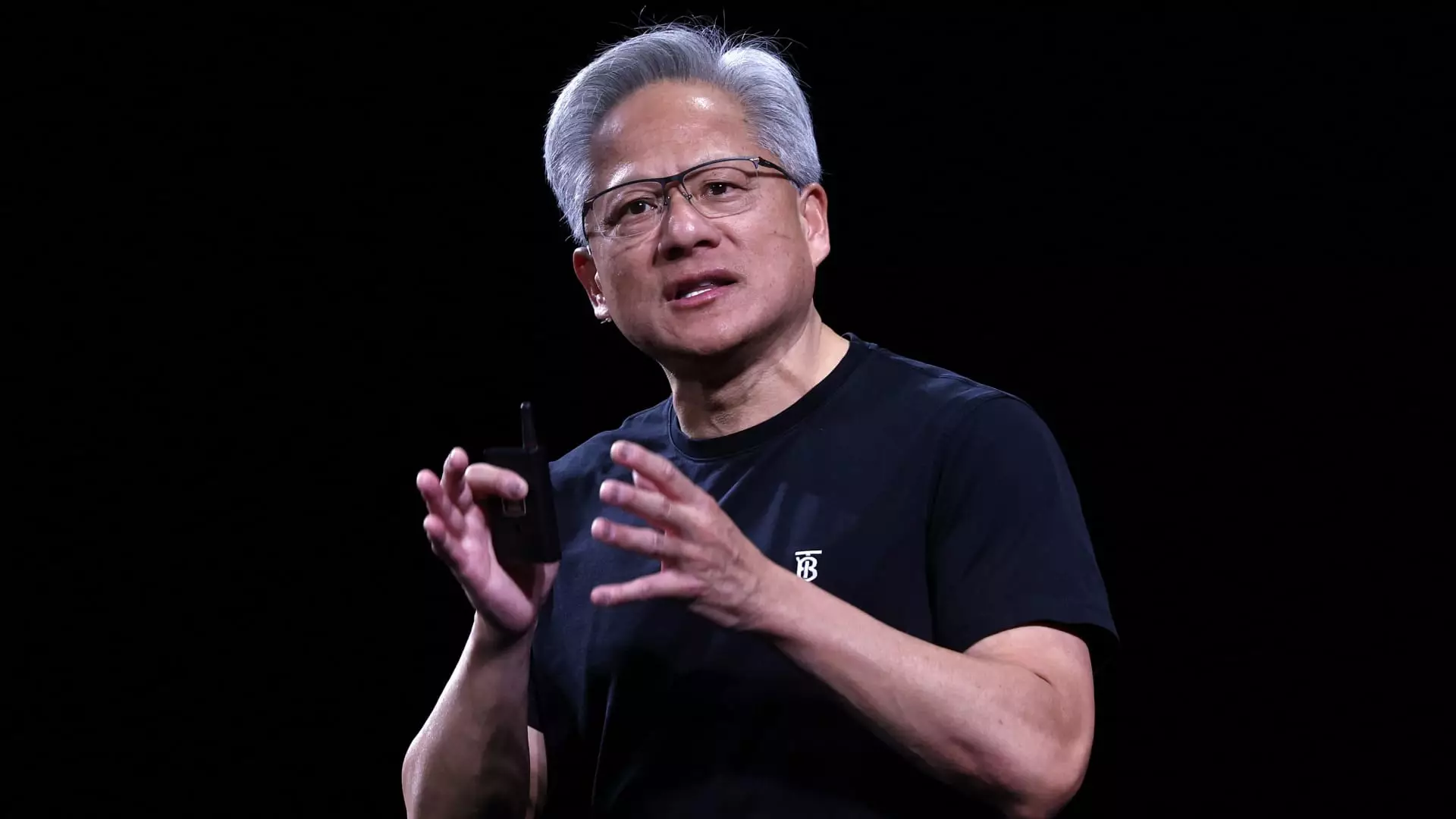Jensen Huang, the charismatic CEO of Nvidia, has recently embarked on an eye-opening European tour that reveals both the promise and challenges present in the continental race towards artificial intelligence (AI). His presence at major events, from London Tech Week to the GTC event in Paris, drew not merely tech enthusiasts, but a diverse audience that included political leaders such as U.K. Prime Minister Keir Starmer and French President Emmanuel Macron. The lines to hear him speak resembled those at popular concerts, highlighting his status as a tech rockstar. But beyond the hype surrounding his persona lies a message steeped in urgency: Europe has the potential to harness AI, but it requires decisive action and a commitment to independence from external technologies.
Huang’s vision extends past just selling graphics processing units (GPUs). He is redefining Nvidia as an infrastructure titan—an entity that will lay down the building blocks essential for nations to develop self-sufficient AI capabilities. This reframing suggests a shift from viewing AI as a luxury or an added benefit to understanding it as crucial infrastructure akin to power grids. If Europe intends to carve out its own destiny in technology, it must band together and establish an ecosystem that prioritizes internal development and mutual cooperation.
Building the ‘Sovereign AI’ Landscape
One of the most salient concepts Huang advocated during this tour was “sovereign AI.” The notion encapsulates a highly pertinent topic among European policymakers: the establishment of AI systems that operate within national borders—serving local populations—rather than relying on foreign servers or companies. This call for sovereignty is not merely about economic independence; it’s about control in an increasingly interconnected world. Why should a nation outsource its data processing? Huang argues that nations must claim ownership over their data and the technological infrastructures that spring from them. France’s partnership with Nvidia to develop an AI cloud exemplifies this trend, setting the stage for a collaborative yet independent future for Europe.
However, while Huang paints a promising picture of this emerging landscape, skepticism remains about whether Europe can indeed unify its diverse countries and cultures to create a cohesive AI strategy. With varying levels of investment, expertise, and regulatory burdens present across the region, the path forwards may be fraught with challenges. Enthusiasm alone will not build the AI infrastructure Europe needs.
The Competitive Landscape: America and China
Huang’s discussions also touched upon the ever-evolving competitive landscape between the United States and China in the tech domain. In a recent conversation, he noted that the U.S. export controls have severely limited Nvidia’s opportunities in the Chinese market, resulting in a staggering $4.5 billion hit from unsold inventory. Despite these setbacks, his commentary reflects a nuanced insight that the Chinese tech landscape is thriving despite constraints—a reality that Huang seems to recognize as both a challenge and a cautionary tale.
He expressed concern that, if American companies continue to isolate themselves from Chinese counterparts, they risk alienating a significant part of the global market in AI development, where nations might turn to Huawei or other Chinese enterprises for innovative tech. Huang emphasized the unfinished potential that lies in collaboration, warning that if U.S. tech companies are not careful, they might relinquish their leadership role to Chinese firms that can leverage homegrown talent and resources. This dichotomy illustrates the complicated relationship between competition and cooperation in a rapidly evolving geopolitical landscape.
The Future Awaits: Autonomous Technologies and Quantum Computing
Huang’s unyielding optimism also rings through when discussing technologies like robotics, self-driving cars, and quantum computing. He describes the current decade as pivotal for autonomous vehicles, and his remarks point to an underlying belief that technology can enhance societal well-being if embraced responsibly. Quantum computing, which is approaching an “inflection point,” promises unimaginable breakthroughs, potentially transforming industries from healthcare to materials science. If harnessed correctly, this technology could solve complex problems that traditional computing struggles with, such as developing life-saving medications and innovative materials.
Yet, despite this optimism, it’s crucial to temper enthusiasm with vigilance. As much as these technologies carry transformative potential, they also pose ethical dilemmas and societal challenges that require in-depth contemplation and regulation. Navigating this future will demand collaboration, not just across borders but also across fields—merging science, policy, and ethics to ensure that as we innovate, we do not inadvertently exacerbate existing inequities within societies.
The call to action from Huang is crystal clear: Europe must awaken to the opportunities presented by AI and strive for self-determination within this realm. The stakes are high, and the world is watching. As the AI race quickens, Europe stands at a crossroads that demands both ambition and responsibility.


Leave a Reply